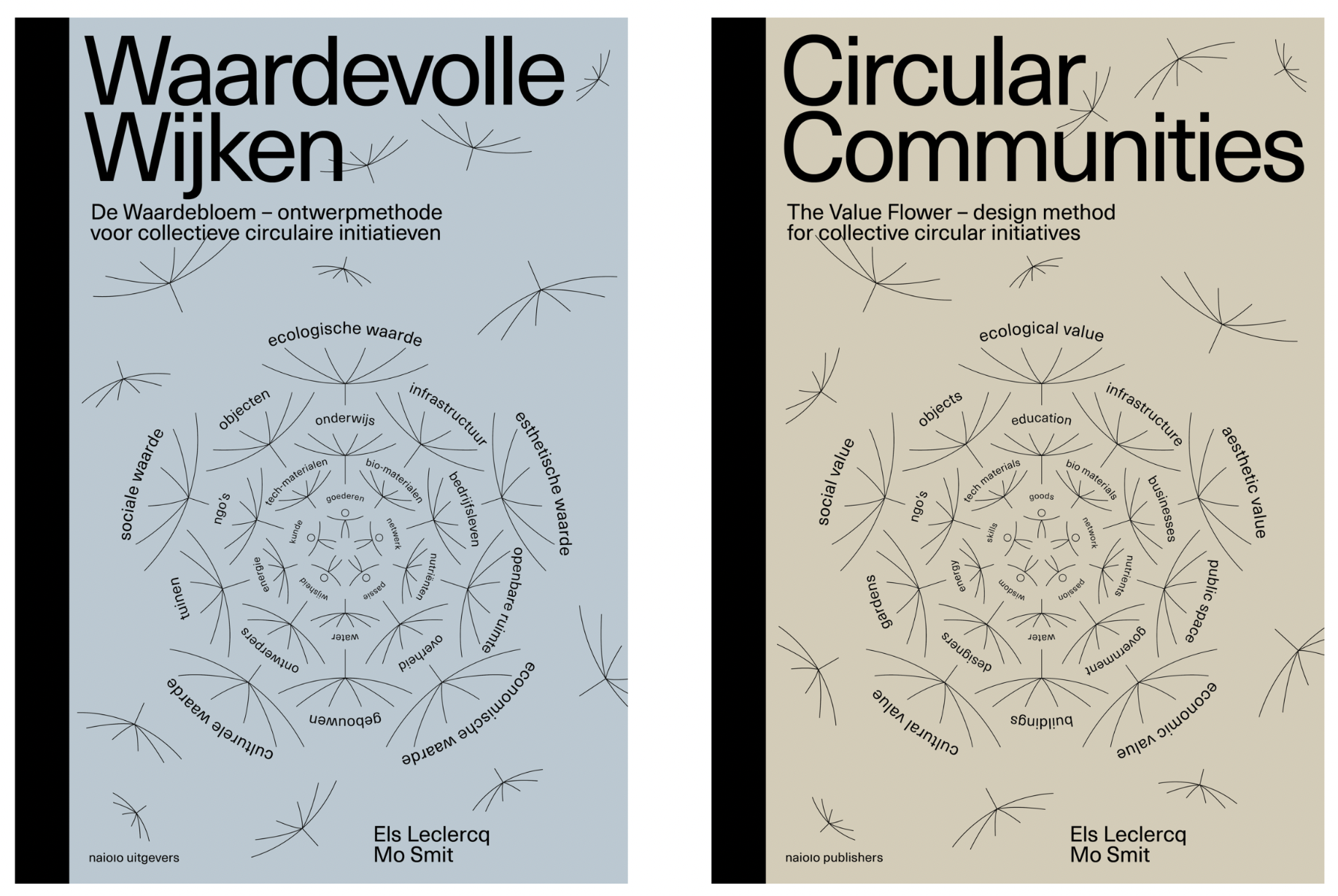The Value Flower is a new design method for collective and circular initiatives. With our support the authors, urban planner Els Leclercq and architect Mo Smit, developed this book, full of extraordinary examples of how citizens, together with the city and entrepreneurs, work on a sustainable neighborhood.
If you ask a person what a circular neighborhood means, chances are the answer will be a green neighborhood. The idea that a circular economy is about using resources as efficiently as possible is a tricky to understand for many people.
So, what form should the circular neighborhood take? With all parties, you formulate answers to these questions: ‘What kind of neighborhood do I want to live in, what is our dream for the neighborhood, who are all participants here?’ New, local forms of organization with a large (or larger) role for citizens and businesses, together with local authorities, will be indispensable in this respect.
About the Book
In Circular Communities, pioneering, collectively supported initiatives are central, aimed at closing resource flows at neighborhood or district level and thus contributing to the transition to a circular economy.
For the analysis of these different initiatives, the researchers - urban planner Els Leclercq and architect Mo Smit - developed a unique method: the Circular Value Flower method. This method helps to organize the joint closing of resource flows (materials, energy, water, biota, nutrients) on a neighborhood scale and provides insight into the added value (economic, ecological, social, cultural, aesthetic) that can be realized within the built environment.

